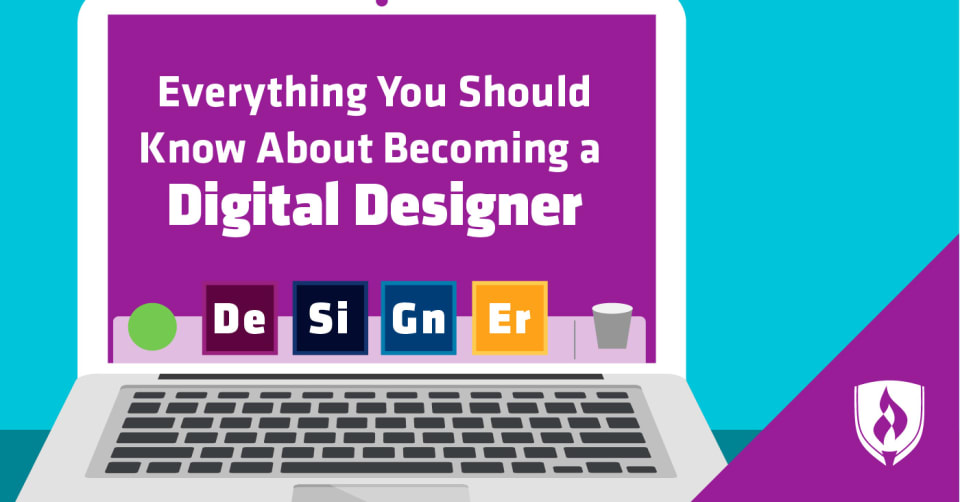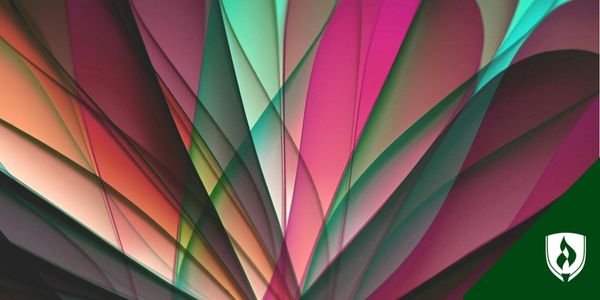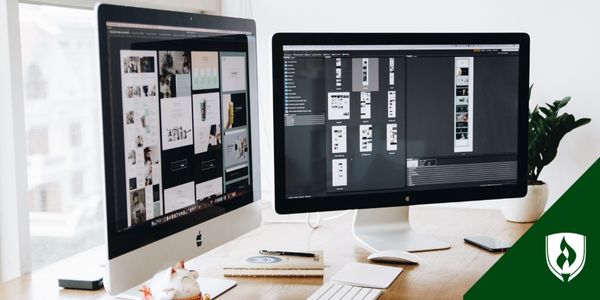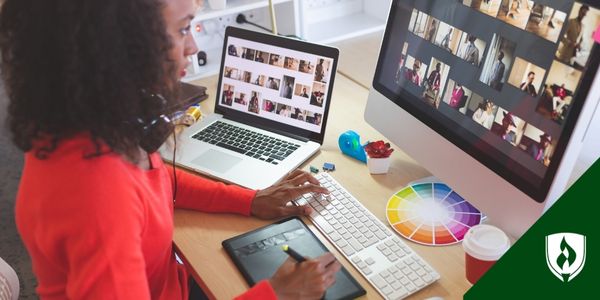
You’ve spent hours researching your future career. One job title that continues to be front and center of your search is digital designer. It’s an intriguing job title, but you need to know all the ins and outs of digital design before you decide if this is the career path for you.
Job duties, skills, education and salary potential will all come into play as you weigh the pros and cons of a digital design career. We collected the data and interviewed expert digital designers to bring you this comprehensive guide to a career in digital design.
Keep reading for a primer on everything you need to know about this exciting career option.
What does a digital designer do?
Digital designers combine their creative skills with technical know-how to bring graphics, animations and other visual effects to life. A digital designer might focus on print design, web design or animation. Some work for business clients while others use their skills to create the special effects in movies and video games.
You may think this means a digital designer spends all day—well, designing. In reality, there are plenty of other job duties that come into play.
Client management plays a large role for many digital designers.
“There’s always the ‘starting’ of the project, where I’m gathering information about the design project from my client—what do they like, dislike, goals for the project, etc.” says Jessica Freeman, graphic and web designer at Jess Creatives. She adds that communicating with clients and revising designs also factors into her daily schedule.
Depending on the industry they work in, digital designers may also spend time mapping out animation storyboards or using hand-drawn sketches or clay models to create a starting point for a design.
What are some common misconceptions about working as a digital designer?
Every industry comes with myths and misunderstandings. Read through these myth-busters to make sure you know exactly what you’re getting into before signing onto a career as a digital designer.
Myth: DIY design is easy and effective
In an age where you can DIY nearly every project with some help from Google, digital design is one task best left to the pros.
“An increasing number of people feel they can do it themselves as long as they have a computer with the relevant software,” says Jonathan Padhiar of Digital Arts Creative. “What they don’t realize is just how much planning, marketing strategies, psychology and creative experience is required to design something that delivers results.”
Myth: You need to be a traditional artist to be a good digital designer
If the word “design” has you thinking back to your old elementary school art projects and cringing, think again. You don’t necessarily need traditional art skills like drawing or painting to be a good fit for a digital design career.
“I’m not great at drawing, so sketching out ideas does not help me,” Freeman says. “It’s easier for me to test out ideas when I can just move boxes around on screen, instead of erasing or starting over.”
That said, you’ll still need to have an eye for what is aesthetically pleasing—just don’t lose sleep if you’re not a natural when it comes to creating with hands-on mediums.
Myth: Designers always love the final product
Digital design may sound like the ultimate creative career, but the reality is that designers are working with teammates and clients to collaborate on the best design for a project’s needs. Market research, clients’ opinions and brand considerations all come into play in a design project. Much of the creativity comes from creating a design that works within the confines of a client’s preferences.
“You are designing for another person, not for yourself, which means you may not agree with the choices made during the project,” Freeman says.
What are some characteristics of a good digital designer?
Now you know what a digital design career is really like, but do you have the innate characteristics of a strong digital designer? Take a look at some of the personality traits that will make you shine as a digital designer.
A thirst for learning
Digital designers rely on ever-changing technology to bring their ideas to life. They also need to be aware of current design and marketing trends to ensure that their designs yield the results their clients need. A love of learning can be a definite boost in this fast-changing industry, according to Padhiar.
Open to constructive criticism
Careers in any creative field will be subject to constructive criticism from your teammates, your boss and your clients. Rather than take every critique personally, a strong digital designer will be able to consider other opinions and objectively decide which adjustments will best serve the design.
“It’s kind of a contradiction—you need to be able to connect with others well, but disconnect from your work,” Freeman says.
Strong communication skills
Digitals designers don’t work in a bubble. They collaborate with coworkers and clients and they often run into tricky situations where strong communication skills are vital.
“People will have bad ideas or suggestions, and you need to be able to gracefully tell them why that font or color combination is a bad idea,” Freeman says.
She adds that “design feedback is hard to articulate for people who aren’t designers,” so it will often fall to you to interpret what a client is really getting at.
What skills do you need to succeed as a digital designer?
You may have the characteristics of a good digital designer, but do you have the skills employers are looking for? We used real-time job analysis software to examine more than 3,300 digital designer job postings from the past year.1 The data helped us identify the top skills employers are seeking.
It turns out digital designers must possess a unique blend of technical and transferable skills. Here’s what we found:
| Top technical skills | Top transferable skills |
|---|---|
| Adobe Photoshop | Creativity |
| Adobe InDesign | Collaboration |
| Adobe Illustrator | Communication skills |
| Adobe Acrobat | Detail-oriented |
| Website design | Organizational skills |
| Social media | Meeting deadlines |
What is the job outlook for digital designers?
Aspiring digital designers are in luck! This creative career is expected to keep pace with average job growth, increasing by about 3,900 jobs (6 percent) between 2014 and 2024, according to the Bureau of Labor Statistics (BLS).2
Digital media is a part of everyday life in our technology-driven world. Consumers want more realistic video games, increasingly impressive special effects and trendsetting website designs. Combine this with the ever-increasing need for mobile device graphics, and digital designers can expect a positive job outlook in the near future.
What education do you need to become a digital designer?
You’re interested in pursuing a digital design career—but how exactly do you become a digital designer? Earning your degree is a great place to start.
The BLS reports that most employers want candidates who have a Bachelor’s degree, especially in specialized programs like interactive media or game design. Employers also prefer designers who bring strong technical skills and a substantial portfolio to the table.
Designing your future
You have the full overview of a digital design career, from what your typical job duties may include to your impressive salary potential. All that’s left is taking the next step toward your future as a digital designer: Earning your degree. Looking to explore different types of design jobs? Learn more about creative director vs. art director.
Getting a degree doesn’t have to be scary—explore your program options with a Graphic Design degree specializing in Web and Interactive Design.
RELATED ARTICLES:
- 7 Things Self-Taught Designers Don’t Know They’re Missing
- 5 Frustratingly Common Client Feedback Examples and How to Overcome Them
- Pros Provide a Behind-the-Scenes Peek at Their Graphic Design Process
- Everything You Should Know About Becoming a Digital Designer
- 6 Stereotypical Horror Movie Characters You May Encounter in Your Real-Life Graphic Design Career
1Burning-Glass.com (analysis of 3,385 digital designer job postings, March 1, 2016 – February 28, 2017)
2Bureau of Labor Statistics, U.S. Department of Labor, Occupational Outlook Handbook, [information accessed February 2017] www.bls.gov/ooh/. Employment conditions in your area may vary.




